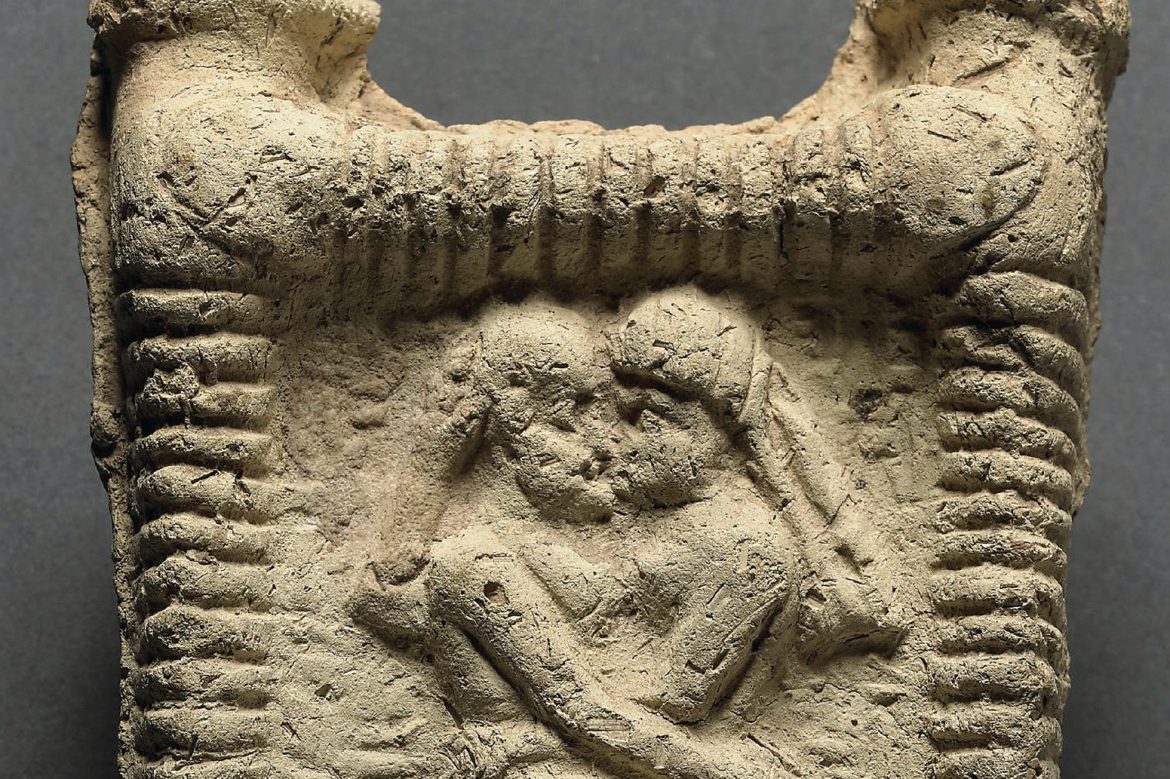
History’s First Kisses
Did you ever wonder why people kiss?
Scientists are curious about the history of kissing at the romantic level as well as why and when it began as a social behaviour in evolution. According to archaeological sources, the earliest known evidence so far is from a manuscript found in India that is assumed to date back to 1500 BC. However, experts state that we should not forget the existence of various pieces of evidence dating back a thousand years in Mesopotamia and Egypt. Therefore, they believe that this behaviour, even though exactly how it emerged in history is still unknown, has been accepted in multiple cultures independently.
According to a new article published in Science, numerous clay tablets clearly show our ancestors kissing in romantic relationships. An inscription on a tablet dated between 1900 and 1595 BC that reads -according to the translator Nathan Wasserman- “My upper lip becomes moist, while my lower lip trembles! I shall embrace him, I shall kiss him” leaves little room for doubt. The behaviour is also clearly stated in two other tablets dated to 1800 BC, where one tells about a married woman losing herself in an unexpected kiss, and the other tells how a single woman vows to never again kiss a man she knows again. Even after thousands of years, it is safe to say that our human feelings have not changed much.
The study discusses two different kissing styles, romantic kisses and ones that are friendly or among family members. While warm kisses are seen in all geographies throughout history, romantic kisses are more common in cultures with different social class divisions (or we can only find archaeological records from societies with such complex social structures). These romantic kisses are suggested to have started at a biological level to assess the chemical and hormonal cues in saliva and breath in order to see if a potential mate is a good match. It is also thought to carry the intention of strengthening the bond and reproductive sexual desire between couples. It is worth remembering that lip-to-lip kissing is also common among our close relatives, the bonobos (Pan paniscus). Additionally, platonic kissing has been observed among chimpanzees (Pan troglodytes) as a means to regulate social relationships.
It’s not just behavioural science that drove the scientists to explore this topic. Kissing has a side effect: the spreading of diseases. A group of experts studying the contagiousness of the mouth-dwelling bacterium Methanobrevibacter oralis think that lip-kissing between Neanderthals and modern humans was already happening 100,000 years ago. Microbial genome analyses dating back thousands of years suggest that organisms that can be transmitted by kissing may have been with us since prehistoric times. DNA analyses reveal that infectious diseases such as those caused by the herpes simplex virus 1 (HSV-1), Epstein-Barr virus and parvovirus B19 were common among our ancestors, suggesting that kissing may have been an important factor in their spread. According to these studies, the habit of kissing was common in all cultures in ancient times, and oral diseases did not suddenly appear due to intercultural interaction.
All these constitute an interesting example of interdisciplinary research, where archaeological evidence goes hand in hand with genetic studies. Although we do not know the cultural and evolutionary reasons for kissing, we can make an idea about its effects on human health.
REFERENCES
- 1. https://www.smithsonianmag.com/science-nature/humanitys-first-kiss-was-earlier-than-we-thought-180982206/
- 2. https://phys.org/news/2023-05-humanity-earliest-mesopotamia-years.html
- 3. https://www.science.org/doi/10.1126/science.adf0512
